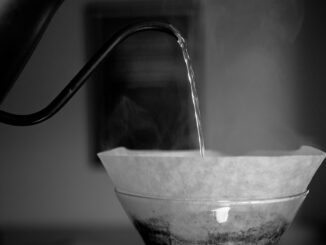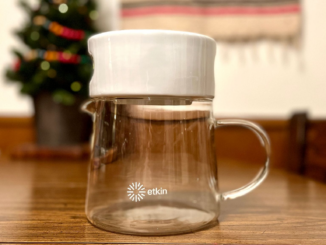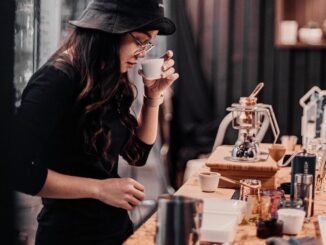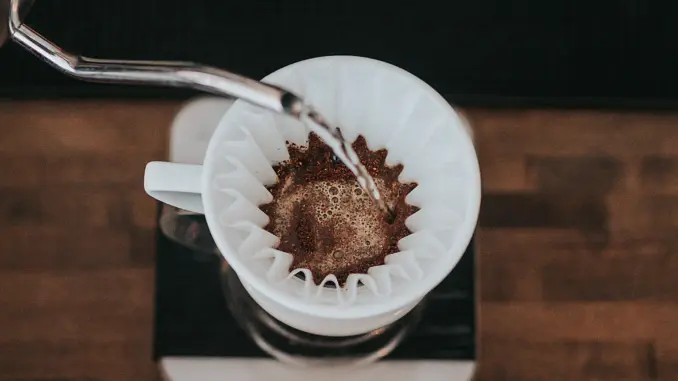
We explore the importance of finding the optimal brew time during the pourover process.
BY EMILY JOY MENESES
BARISTA MAGAZINE ONLINE
Feature photo by Tyler Nix via Unsplash
When trying to craft a balanced cup of coffee while making a pourover, there is a multitude of factors to consider. In our “Achieving the Perfect Pourover“ series, we’ve delved into a few of these key factors, explaining how water temperature, grind size, and water-to-coffee ratio all play a role in getting your cup just right.
In this last installment, we’re exploring the importance of brew time—how long your coffee grounds are in contact with water during the brewing process—and how varying brew times can make or break your cup.
Why It’s Important: Optimal Extraction
Brew time during the pourover process is extremely important because it directly correlates with the amount of flavor that’s being extracted from your grounds. An optimal brew time allows for balanced extraction, maximizing the desirable flavors being coaxed out of the coffee while minimizing the extraction of undesirable flavors.
As a result, getting the right brew time acts as a balancing act between under-extraction and over-extraction. A too-short brew time results in under-extraction—an incomplete extraction of flavors—leading to weak, flat-tasting coffee that doesn’t accurately reflect the full flavor profile of your beans. On the other hand, a brew time that’s too long will cause over-extraction, leading to bitter or astringent-tasting coffee.
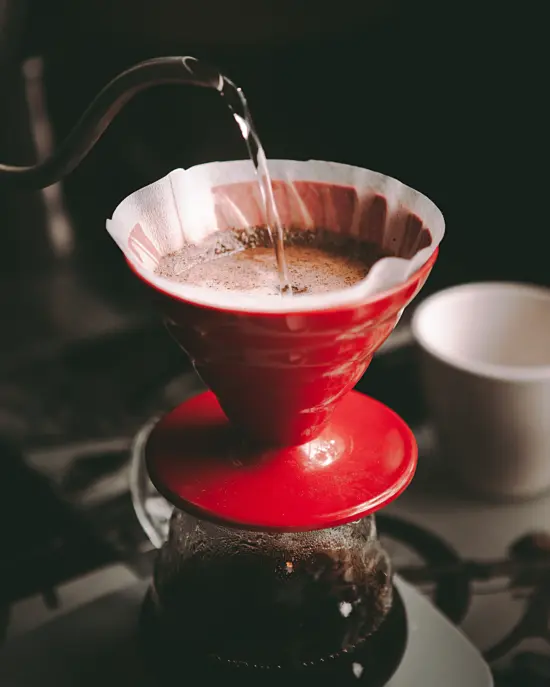
Finding the Sweet Spot
The “sweet spot“ brew time of your coffee will vary based on a number of factors, including what kind of coffee you’re working with, your grind size, water temperature, and your personal preferences in terms of how your coffee tastes. Though the optimal brew time will vary from one pourover device to another, it should typically fall within the three- to four-minute range.
Finding the sweet spot for the coffee you’re working with will take experimentation, with a lot of trial and error. Be sure to log your measurements as you try out different recipes and techniques.
Factors to Consider
To determine the right brew time, consider the characteristics of your coffee. Lighter-roasted coffees often require longer brew times to fully coax out their delicate and complex flavors, while darker roasts may benefit from slightly shorter brew times to avoid over-extracting their already bold notes. The brew time will also flex depending on your grind size; a finer grind will do best with a faster brew time, while a coarser grind should be a bit slower.
Keep in mind that your water temperature will also affect your brew time. The hotter your water is, the more quickly flavors will be extracted, while a lower water temperature will call for a longer brew time to bring all the flavors out of your coffee.
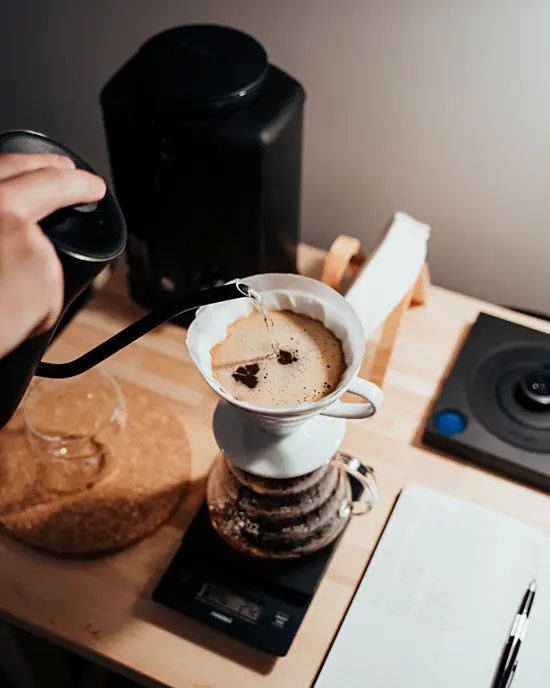
Making Adjustments: Grind Size and Pour Rate
If you keep missing your goal brew time, you might want to change your grind. If your brew time is too short and you want to slow it down, make your grind finer—conversely, if your brew time is too long and you want to make it shorter, go a little coarser.
The rate at which you pour water during the pourover process will also make a big difference in the way your cup tastes. This is why gooseneck kettles are so highly recommended for the pourover process—the shape of the spout allows for a smooth, consistent stream of water and greater control over the speed and strength of your pour.
There are many different ways you can pour water into your brewing device during the pourover process. After the blooming phase, you can choose to do one long, slow pour, or several shorter pours. Play around and see what works best for you and the coffee you’re brewing.
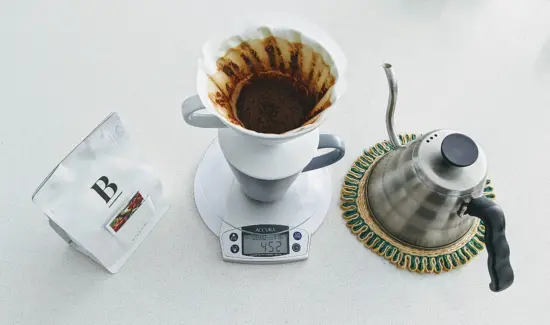
Control and Consistency
Mastering the art of finding the right brew time for your coffee will grant you more control over your brewing process and ensure consistency in the taste and quality of your coffee from cup to cup. Once you’ve found the ideal brew time for a particular coffee, you can replicate it to achieve a consistent flavor profile every time.
Don’t be afraid to experiment, and remember to find joy in the process! By embracing the pourover method and all of the attention to detail that goes into it, you can begin unlocking the full potential of your coffee beans.
ABOUT THE AUTHOR
Emily Joy Meneses (she/they) is a writer and musician based in Los Angeles. Her hobbies include foraging, cortados, vintage synths, and connecting with her Filipino roots through music, art, food, and beverage.
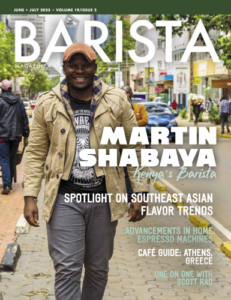
READ THE LATEST BARISTA MAGAZINE
Out now: It’s the June + July 2023 issue of Barista Magazine featuring Martin Shabaya of Kenya on the cover. Read it for free with our digital edition. Get your Barista Magazine delivered; start a subscription today! Visit our online store to renew your subscription or order back issues.


